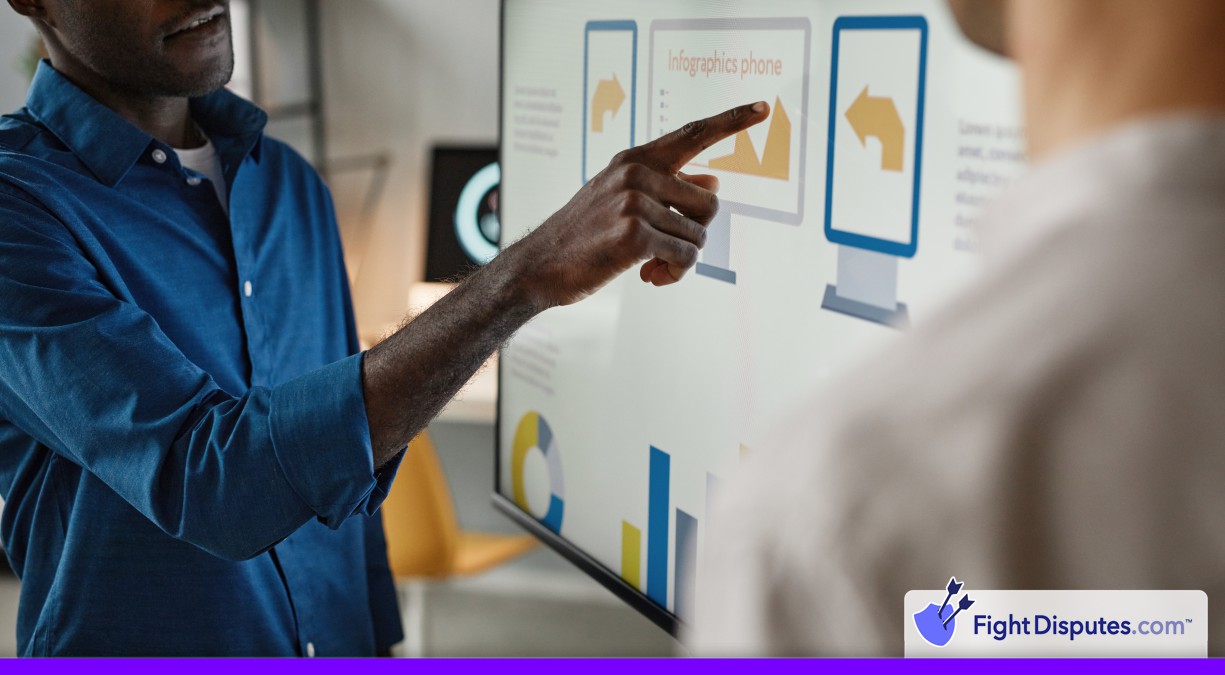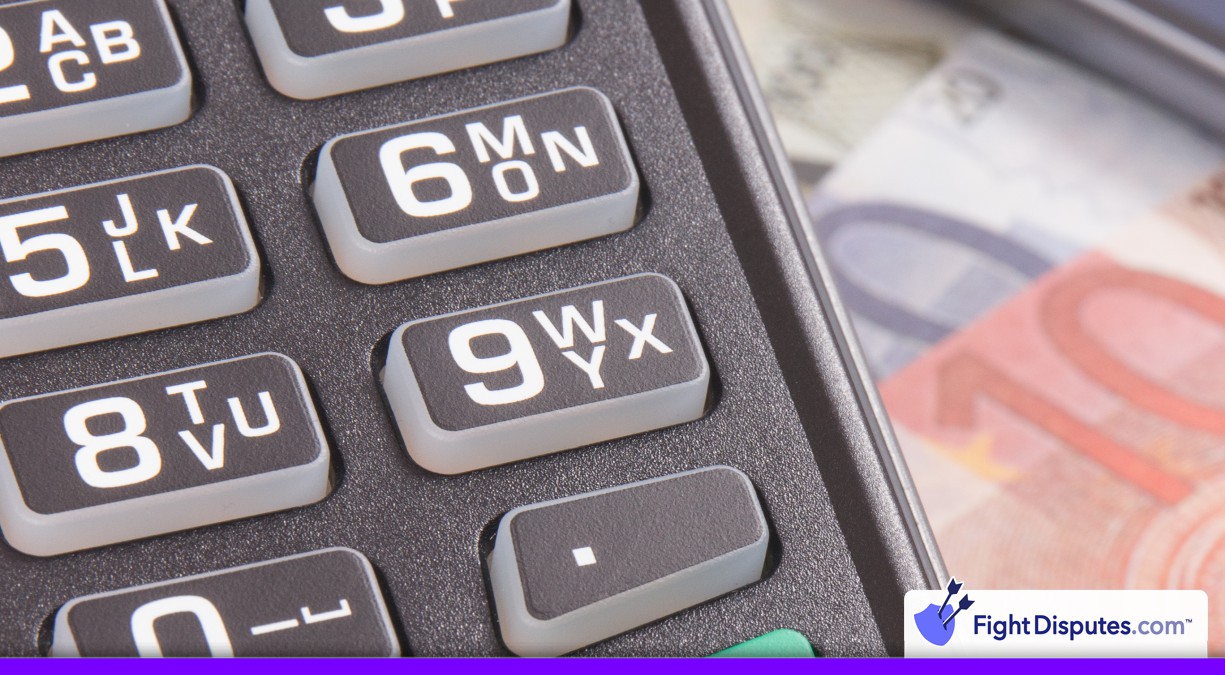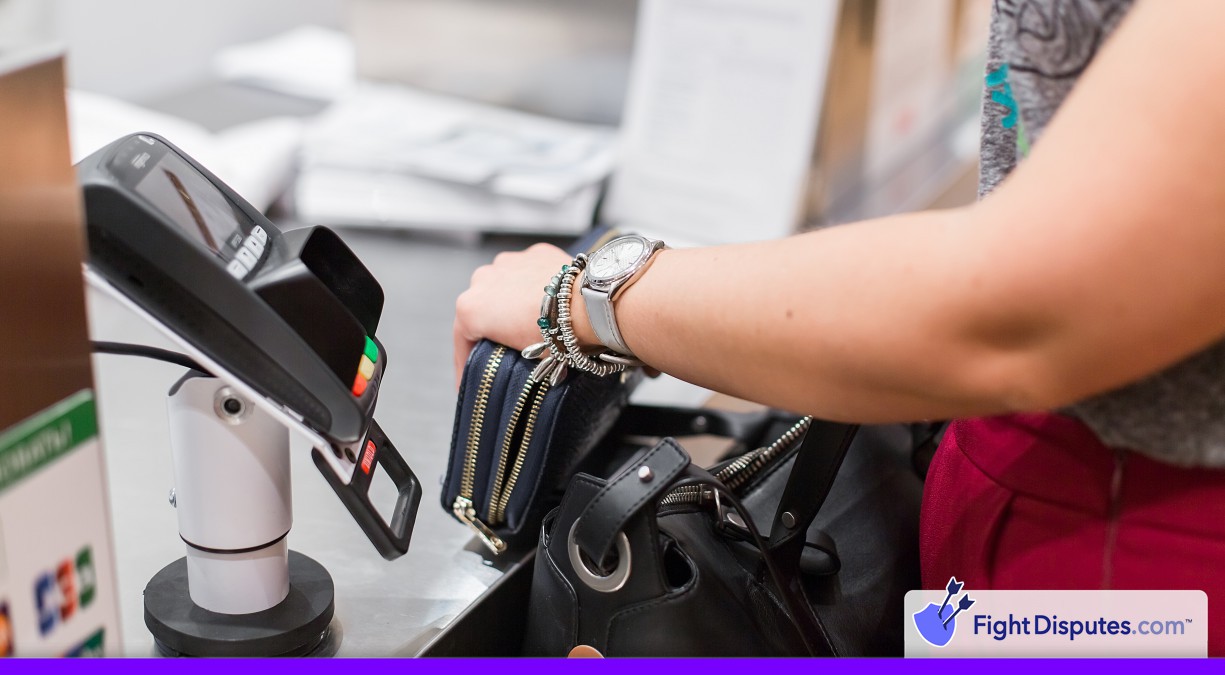11.2: Declined Authorization
Code 11.2 chargebacks happen when you process a transaction even after you have already received a decline or pickup message directly from Visa’s system.
These chargebacks can be avoided and the fact that they appear at all says quite a bit about your payment setup. When they continue to show up, it means that you have some actual problems with how your team deals with payments. Your staff may need better training on what actions to take when cards get declined or your payment system might need an upgrade. Either way, payment processors view these chargebacks as a warning that you are not following the basic payment laws.
The financial headache is only starting once the first transaction fails. Chargeback fees will add to the revenue that you already lost and your merchant account could be looking at increased penalties or closure if this turns into a pattern. Payment processors don’t tolerate businesses that ignore warnings from the card networks.
Code 11.2 can be very frustrating for business owners and the reason for that frustration might not be obvious. The original decline message was there to protect you and your business from possible problems. Most of these messages point to actual issues – stolen cards, accounts without enough funds or other signs that should have made you stop and not finish the sale. Processing the payment anyway after you get those warnings is basically not a smart idea for your business.
How It Works
When a credit card gets declined at the checkout counter, that should be the end of the story, plain and easy – case closed and customer walks away without whatever they were trying to buy. But some merchants apparently think they can outsmart the system and push the transaction through anyway – this turns out to be quite an expensive mistake that usually results in a chargeback under Visa’s code 11.2 and it’s avoidable if merchants would just accept the decline and move on.
You never see what actually goes on behind the scenes during a payment transaction. You swipe or insert your card and the terminal will immediately send an authorization request over to the card issuer. The issuer takes a quick look at the account status and sends back their response. Sometimes it’s a decline – maybe the account doesn’t have enough money in it or the card has already expired. When that happens, the whole transaction should stop right there. That should be the end of it.
But every once in a while, a staff member will push the transaction through even though the system is telling them not to. Maybe the employee will manually type in the card information by hand or maybe they will switch the whole system over to offline mode just to get around that annoying decline message. From where you’re sitting as the business owner, everything looks like it went through just fine and your customer happily walks out of the door with whatever they wanted to buy.
The bigger issue starts when that forced transaction eventually hits the issuer’s system for processing. Keep in mind that they already said no to this charge in the first place. Now they see that you went ahead and took the money anyway – even after their decline. The issuer has as many as 75 days to file a dispute through Visa’s Claims Resolution system and they’re probably not going to be happy about it.
Once they file that dispute, the chargeback gets passed along from the card issuer down to your payment processor. Your processor doesn’t wait around – they’ll pull the full transaction amount immediately from your merchant account and they will pile on their own processing fees as they’re at it. So now you’re out the money from the original sale and you’ve lost the product you shipped and you get to pay extra fees for the whole mess. It’s not a great position to be in.
In most cases this problem happens when the point-of-sale system loses its connection or something else goes wrong with the technology. When that happens, staff members like to think that they should just run the card by hand so the customer doesn’t leave disappointed. Sometimes though, the person who does the manual entry messes up the card numbers and doesn’t see that the original transaction already got declined for a reason.
How it Affects Chargeback Prevention
Code 11.2 chargebacks are the worst-case scenario for merchants everywhere. When you receive one of these, the fight gets nearly impossible because the evidence against you is much too strong. The transaction was processed without the right authorization – it’s a fact that’s very hard to dispute through any normal appeal channels. Your paperwork won’t save you here either (no matter how much you have stored in your records, it won’t change the root issue at hand) this type of chargeback leaves very little room for merchants to argue their case or negotiate any sort of fair resolution with the card networks.
Prevention is the only strategy at that point. You have to catch these problems before they turn into chargebacks in the first place. Every Code 11.2 that shows up on your desk tells the card networks that something is broken in your payment process and they keep tabs on every one of them. Visa watches your chargeback ratios very closely and Code 11.2 cases make those numbers climb faster. Your merchant account provider starts to see you as a much bigger liability than they did before. They might raise your fees or hold onto more of your money in reserve. Keep having these problems and they’ll eventually end your contract.
The whole industry community has shifted over the past couple of years and it’s not been in favor of merchants. Visa has stepped up its oversight around authorization problems and gotten serious about this. The fines that it’s handing out now are far higher than what businesses had just 2 years back. Payment processors have also grown much less patient with businesses that try to process transactions without the right authorization first.
Code 11.2 chargebacks work like warning lights on your dashboard. 1 or 2 could be honest mistakes that anyone in business can make. But when they show up over and over again you have a problem that needs quick attention. I see this all of the time – and your entire authorization process probably should have a big fix at that point.
Example Scenarios
When a payment terminal declines a card, merchants can feel pressured to make the sale anyway. At busy restaurants, card readers sometimes reject customer payments. Customers insist that their cards have plenty of money available and there could be a line of impatient customers waiting behind them. Staff might choose to manually enter the card numbers and info to force the transaction through – but this actually causes a big problem because Visa had already said no to that transaction.
Retail stores face a different type of payment processing headache. Sometimes there’s a technical glitch hidden in the checkout system that causes it to automatically retry the same transaction over and over again and neither the merchant nor the customer has any clue that it’s happening. The customer thinks they’re just clicking that “pay now” button once and moving on with their day. But behind the scenes, that payment system is retrying the same transaction, trying to force it through again and again and each retry after the decline is actually a violation of Visa’s processing laws – even though neither party meant to cause anything wrong.
Car rental businesses need to verify that a card can cover the final bill and any extra damages before they hand over the keys. They’ll run an authorization check when customers arrive or pick up the car. If that attempt gets declined, staff might try again with a smaller amount to at least get a bit of protection or they’d believe that an offline authorization will work once they reconnect to the network later. Any of these strategies lead directly to chargeback code 11.2 because Visa says merchants have to stop after the first decline.
Requirements and Timeframes
Code 11.2 disputes are situations where timing matters for your business. Cardholders can file these disputes for as long as 120 days after their original transaction date, giving them a wide window. Once Visa sends you that dispute notification, the clock starts ticking on your end too and you’ll usually have about 30 days to get your response together and submitted.
The tough part is that card issuers are working with their own separate timeline. They have to file the chargeback within 75 days of the transaction date which gives you an overlap. These different deadlines work for or against you depending on how you manage each case.
Your records are probably going to be your biggest help to manage these situations. What you need is to make sure that you’re capturing each authorization attempt that comes through your system and whatever response code was sent back – and I mean all of them no exceptions. Your logs should include the main facts. You also want to save any communication you might have had with the customer about why their transaction was declined in the first place.
Evidence is everything when challenging a chargeback. You might have an approval for that same card on a later transaction that shows the card was working fine. Or maybe you had already processed a refund before the dispute even came through. Customers sometimes withdraw their complaints after you reach out and work matters through with them directly.
Most payment processors recommend keeping your authorization records for at least 13 months – this covers the standard dispute window and gives you some extra cushion for those unusual cases that surface later.
Frequently Asked Questions
What happens if my staff accidentally processes a declined transaction?
A declined transaction that gets processed anyway is the mistake that can hurt you later - it doesn't matter if an employee made an honest mistake or your payment system had some technical glitch that day. Visa doesn't care about the circumstances or how sincere your intentions were - they treat every violation the same way. That means you're going to have big issues no matter how it happened.
The second this chargeback hits your account, the money disappears right away. You'll lose the full transaction amount and a chargeback fee that usually ranges from $20 to $100. Your payment processor will also flag your account for review and they're now watching you more closely.
And believe me, it gets even worse from there. Once this pattern shows up (even if it only happens a couple of times) your payment processor is going to watch your account even more closely. They'll increase the amount that they hold back from your sales, or they might freeze some of your revenue altogether. What they're doing is creating a safety net so they know you can cover any extra chargebacks that show up later.
The most frustrating part is that Visa assumes you should have caught the error in advance. They expect all merchants to have proper systems in place to avoid these mistakes. If your new cashier didn't know to check for the authorization codes, that's your responsibility. If your point-of-sale system let the transaction go through anyway, that's also your problem to solve.
Most merchants learn this lesson the hard way after their first violation. Then they scramble to train their staff and update all their procedures.
Can I win a dispute against a Code 11.2 chargeback?
There are 3 ways that you can fight back and maybe win one of these disputes. First, show solid proof that the bank later approved the transaction after the first decline. You can also show paperwork that proves you gave the customer a full refund before they filed their dispute. The third way to win is if the cardholder decides to withdraw their complaint on their own. Those are the only 3 paths to a win with a Code 11.2 chargeback.
What frustrates merchants is that these defenses are very hard to pull off. The documentation requirements are tough - everything has to be perfect if you want to prove your case to the bank. Their standards for evidence are extremely strict and they won't budge. They want to see authorization codes that are pulled from their own system or signed refund receipts that cover everything they ask for. A quick screenshot from your payment dashboard isn't going to be nearly enough.
A lot of merchants want to push back against every chargeback that shows up and I get the mindset - it does feel like a matter of principle when someone disputes your sale. With Code 11.2 disputes in particular, you're better off accepting the loss and putting that energy toward something more productive.
How is Code 11.2 different from other authorization chargebacks?
Most of the payment processing issues come from little mistakes - maybe you forgot to get approval first or you tried to use an old authorization code that had already expired. Those slip-ups are frustrating but at least they make sense. Code 11.2 is a different situation though - this code shows up only if you actually saw Visa decline the transaction and then decided to push it through anyway.
Once a Code 11.2 chargeback hits your account you're stuck with no way out. There's no defense that you can put forward because you went against what the payment network plainly told you not to process. Visa used to label this situation as Code 71 in their older system. They switched to 11.2 when they updated everything. The core message hasn't changed - when they say no they mean it.
Visa has strong reasons for their hard-line stance on this topic. Most of the declined transactions are warning signs of much bigger problems underneath. The card could be stolen and in the hands of a person who has no right to use it or maybe the bank has already shut down the account for reasons that the merchant doesn't know about yet. Sometimes it's something as basic as not enough funds. Even what look like minor situations can snowball into messy disputes and chargebacks that nobody wants to manage.
With the other types of authorization chargebacks you might have some room to explain what went wrong. Maybe your terminal went offline at the worst possible time or some technical glitch caused problems. Code 11.2 doesn't give you that luxury because the only way it happens is if you actively chose to ignore the decline message.
What evidence do I need to fight this chargeback?
Your authorization logs are by far the most important evidence that you can give them. Banks want to see those exact approval codes and timestamps from when the payment went through. A basic receipt or a short email from the customer just won't cut it for this dispute.
Let's say you already gave the customer their money back before they filed a chargeback. You'll need dated proof that shows the exact time when the refund went through. The best strategy is to show in your paperwork that the refund happened before the chargeback arrived. Believe it or not, customers forget that they received their refund and when you show them the proof the whole situation is usually resolved faster.
Hotels and car rental firms have a few extra problems when they manage these disputes. These industries usually run a few separate authorization attempts as part of a normal booking. That means you have to have complete records of every attempt and explain why each one was handled on its own.
The quality of your evidence can make or break the whole dispute and incomplete paperwork is the quickest way to lose. Credit card issuers have very strict laws about what counts as proof. Sending partial paperwork or the wrong evidence means your case is over before anyone even reviews it. They don't mess around with these chargeback codes. The paperwork requirements are set in stone and there's almost no wiggle room on what counts as acceptable proof.
Full authorization records will save your bacon when chargebacks arrive. Every transaction that you run needs to have its approval codes and response data stored somewhere safe to grab later.
Will repeated Code 11.2 chargebacks affect my merchant account?
Your payment processor and Visa will start watching your merchant account far more closely and the extra attention almost never works out in your favor. The first change you'll probably see is that your processing fees are going to climb - sometimes by quite a bit. You might also have to manage reserve requirements. you'll need to lock up part of your revenue in accounts that stay off-limits for months at a stretch.
Even just a handful of these chargebacks can push you straight into high-danger merchant territory and once you're there, everything about payment processing gets quite a bit more expensive and harder to manage. What's worse is that this damage to your reputation tends to follow you around when you're trying to work with other payment processors later. Card networks have become much less patient with merchants who are trying to force transactions through after receiving decline messages and they're catching this behavior far faster than they used to.
Prevention is your only reliable defense here because the damage to your merchant account reputation can hang around for years. When acquirers see a pattern of Code 11.2 chargebacks they know immediately that you've been attempting to bypass authorization controls and putting your entire ability to process payments in danger. Account closure might sound extreme to some but it happens more when merchants continue pushing declined transactions through their systems.
 Call (844) NO-DISPUTES
Call (844) NO-DISPUTES




